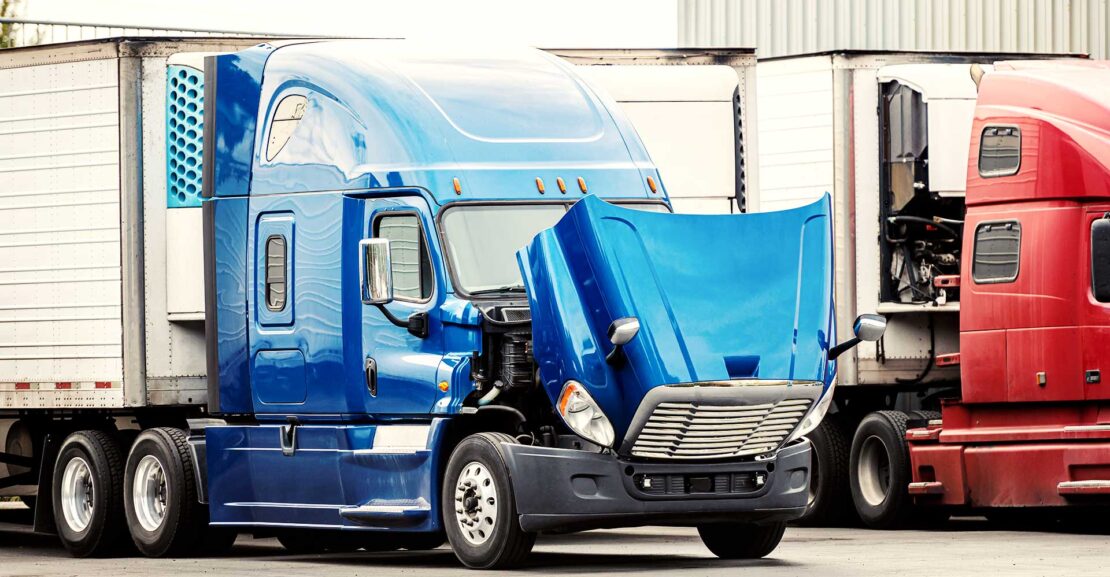The Costliest Issues a Fleet Maintenance Plan Typically Covers

Fleet owners know that their trucks are their biggest assets. With new semis having price tags of $150,000-$250,000 or more, it pays to maintain these assets and keep them running optimally. But staying on top of truck maintenance can be challenging, especially as your fleet grows. Enrolling in a maintenance program can help you stay on the right track. In fact, many are all-encompassing and cover some of the costliest issues that fleet owners face.
The Importance of Maintaining Your Fleet
Trucks, like any other vehicle, need to be maintained if you want them to run optimally. A well-maintained truck is like a well-oiled machine – it runs smoothly and has fewer breakdowns. Following a consistent fleet maintenance schedule can help.
Prevent Costly Downtime
Regular maintenance can help prevent roadside breakdowns, which cost your team and your business time and money.
When you follow a regular maintenance schedule, you can also catch issues early on and schedule repairs around your business’s needs rather than being blindsided by downtime and unexpected repairs. When your trucks are well-maintained, they will spend less time in the shop and more time hauling cargo that keeps your business running.
Stay Compliant with Regulations
Fleet maintenance is required by the Federal Motor Carrier Safety Administration (FMCSA). To remain compliant, the FMCSA requires the following:
- Carriers to inspect, repair and maintain all vehicles under their control.
- Parts and accessories to be in safe and proper working condition.
- Windows, doors, and door marking lights are to be inspected every 90 days.
Additionally, the FMCSA requires fleet owners to maintain detailed records of vehicle maintenance, inspections, and repairs.
Following a consistent maintenance schedule will help ensure that your fleet remains compliant with FMCSA’s regulations.
Improve Safety
Poorly maintained vehicles put your employees and other drivers at risk. For example, failing to maintain a truck’s brakes can lead to total failure and potentially serious injuries if an accident occurs.
When your fleet is well maintained, drivers can work more efficiently and safely. In addition, you can catch issues, like brake wear and tear, early on and address them before they become dangerous.
Ensuring that all ramps, lifts, and control panels are well-maintained can also help ensure the safety of your equipment.
Extend the Lifespan of Your Vehicles
Regular maintenance can help extend the lifespan of your fleet, providing you with a greater return on investment. Commercial trucks take a lot of abuse, and without proper care, they can fail prematurely.
Even simple maintenance tasks, like oil changes and transmission fluid flushes, can go a long way in improving the longevity of your vehicle.
3 Costly Issues That Suppose U Drive Maintenance Programs Cover
Big rigs are on the road for 2,000 to 4,000+ miles per week. In a single year, most trucks will haul goods over 100,000 miles, and maintenance of some sort is almost always required. If you’re not part of a maintenance program, these three forms of maintenance are the costliest throughout the year.
1. Tire Replacements
Tires help your rig grip the road, improve stopping power, and are key to keeping your truck on the road. While a single tire replacement may not seem costly, a single tire still costs between $400 and $600.
Some tires can go up to $1,200 each.
Now, a semi-truck can have 18 wheels, or specialized trucks can have up to 36 wheels. If you have to replace all 18 tires, the cost can be around $9,000 (or more) just for the tires – not including labor.
Maintenance may include:
- Tire inspections
- Tire rotation
Proper tire maintenance and replacement are always better than dealing with the risk of a blowout. Most trucks will get 110,000 to 120,000 miles on steers and 160,000 to 180,000 on drives.
2. Oil and Lubricants
Oil changes for a big rig are a key part of keeping your truck’s engine running smoothly. Multiple factors will impact oil and lubrication frequency, but you can expect to need an oil change every 10,000 to 25,000 miles.
Costs for an oil change will vary greatly, depending on the type of oil and filter needed.
However, you’ll need to pay $300 to $425+ for a single oil change. If you use synthetic oil, the price can be an additional $100 to $150.
While these prices may not seem significant, you may need 5 to 8+ oil changes a year, depending on the type of semi-truck and oil type.
3. Emissions Systems
A major truck maintenance cost involves your emissions systems. These systems are known as the Diesel Particulate Filter (DPF), Exhaust Gas Recirculation (EGR), and the Diesel Exhaust Fluid (DEF). Each is meant to restrict emissions while improving the efficiency of the vehicle.
To maintain their functionality, these systems must be cleaned regularly. If they are not properly cleaned or excessive time passes between cleanings, they can become blocked with debris and build-up, which will cause the entire system to break. In that event, it will cost you a great amount of money to replace them and remedy the collateral damage caused by failed DPF, EGR & DEF.
To prevent such an occurrence and cost, regularly scheduled cleanings and preventative maintenance should be a priority, and a part of any maintenance plan you may possibly enroll in.
It Pays to Maintain Your Fleet
A truck maintenance program allows you to have peace of mind that your truck is ready to handle load after load. Proper maintenance keeps your rigs running well, reduces the risk of high-valued repairs and improves your overall safety.
At Suppose U Drive, our fleet maintenance program offers multiple solutions that are designed to fit into any budget. Click here to sign up for our newsletter, where we share more information and insights about the trucking industry.

